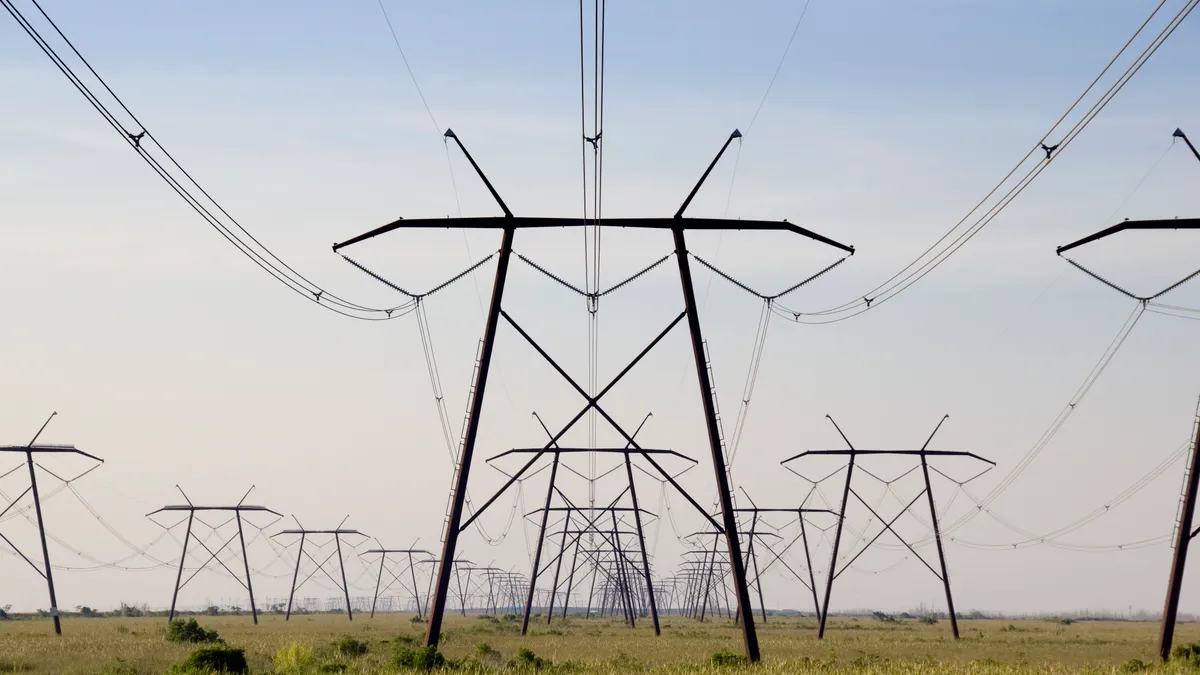Dive Brief:
-
A federal appeals court on Friday vacated transmission rules that allow the functioning of the Southeast Energy Exchange Market, a trading platform for utility companies such as Southern Co., Dominion Energy, and Duke Energy across the Southeast.
-
The Federal Energy Regulatory Commission’s November decision approving the transmission rules was “inconsistent” with the agency’s open access requirements in its Order 888 that aim to ensure transmission owners offer non-discriminatory access to their systems, the U.S. Court of Appeals for the District of Columbia Circuit said in a split decision. The court also remanded FERC’s earlier decision approving the overall SEEM market.
-
SEEM will “work through the FERC process to address the limited issues identified in the court’s decision,” said Demetrius Sherrod, spokesperson for SEEM at Southern, in an email Monday. The market will continue operating as FERC responds to the court’s decision, he said.
Dive Insight:
Groups that challenged FERC’s approval of the SEEM praised the court’s decision.
“SEEM was disadvantaging independent clean energy generators and privileging its utility members – some of the largest utilities in the country – creating monopoly-like conditions that would prop up their own expensive, carbon-intensive coal and gas resources,” said Danielle Fidler, Earthjustice senior attorney, in a statement.
The court also said FERC made a mistake in declining to consider rehearing requests after the overall SEEM proposal took effect when the commission deadlocked on it in October. FERC rejected rehearing requests from groups including Advanced Energy United, the Solar Energy Industries Association and the Southern Alliance for Clean Energy, saying they were filed too late.
SEEM allows its members to make automated bilateral trades every 15 minutes using available transmission capacity. The trades are enabled by non-firm energy exchange transmission service, or NFEETS, which FERC approved in the November decision.
However, the court said FERC failed to explain why the market should be allowed to exclude participants outside the region, the U.S. Court of Appeals for the District of Columbia Circuit said in a split decision. There were 65 bilateral trading partners outside the SEEM region that were excluded from the market, according to the ruling.
“The creation of a new service that — by its design — excludes existing market participants evokes the discriminatory practices against third-party competitors by monopoly utilities that prompted the commission’s adoption of Order No. 888,” the court said.
On remand, FERC should give a deeper explanation for why the SEEM’s market design is better than the status quo in light of Order 888’s open access principles, the court said.
“Order No. 888 requires a more cogent explanation when the design of a new service denies access to preexisting market participants,” the court said.
Instead of 15-minute intervals, the court asked whether SEEM could provide intra-hour trades at a longer interval that would still be cost-effective while allowing for existing trading partners outside of the region to request service.
FERC also needs to further explain its finding that the SEEM isn’t a “loose power pool,” and therefore not required to allow open membership and offer transmission service to non-members, the court said.
In a partial dissent, Judge Neomi Rao said FERC’s decision approving NFEETS was lawful and reasonable.
“SEEM adds value to energy markets in the Southeast by permitting beneficial transactions that otherwise could not happen,” Rao said. “While SEEM is open only to entities within SEEM’s geographic footprint, there are compelling technical reasons why this must be the case … The fact that FERC failed to consider hypothetical energy market structures postulated by this court does not render the tariff order arbitrary and capricious.”
In May, cleared volumes in the SEEM market ranged from about 2,750 MWh to about 400 MWh a day, according to a report by Potomac Economics, the market’s auditor. In comparison, Southern’s utilities sold about 560,000 MWh a day last year on average, according to the company’s annual report.
Since the market launched in November, market participants have made more than 50,000 transactions, representing more than 1.3 terawatts, according to Sherrod.
“As this region works to add more renewable resources, like solar, customer-centric efforts like SEEM will enable these goals without imposing undue bureaucracy and cost,” Sherrod said.
SEEM members include Associated Electric Cooperative, Dalton Utilities, Dominion Energy South Carolina, Duke Energy Carolinas, Duke Energy Florida, Duke Energy Progress, Georgia System Operations, Georgia Transmission, JEA, Louisville Gas & Electric and Kentucky Utilities, MEAG Power, North Carolina Municipal Power Agency No. 1, North Carolina Electric Membership Corp., Oglethorpe Power, PowerSouth, Santee Cooper, Seminole Electric, Southern, Tampa Electric and Tennessee Valley Authority.















